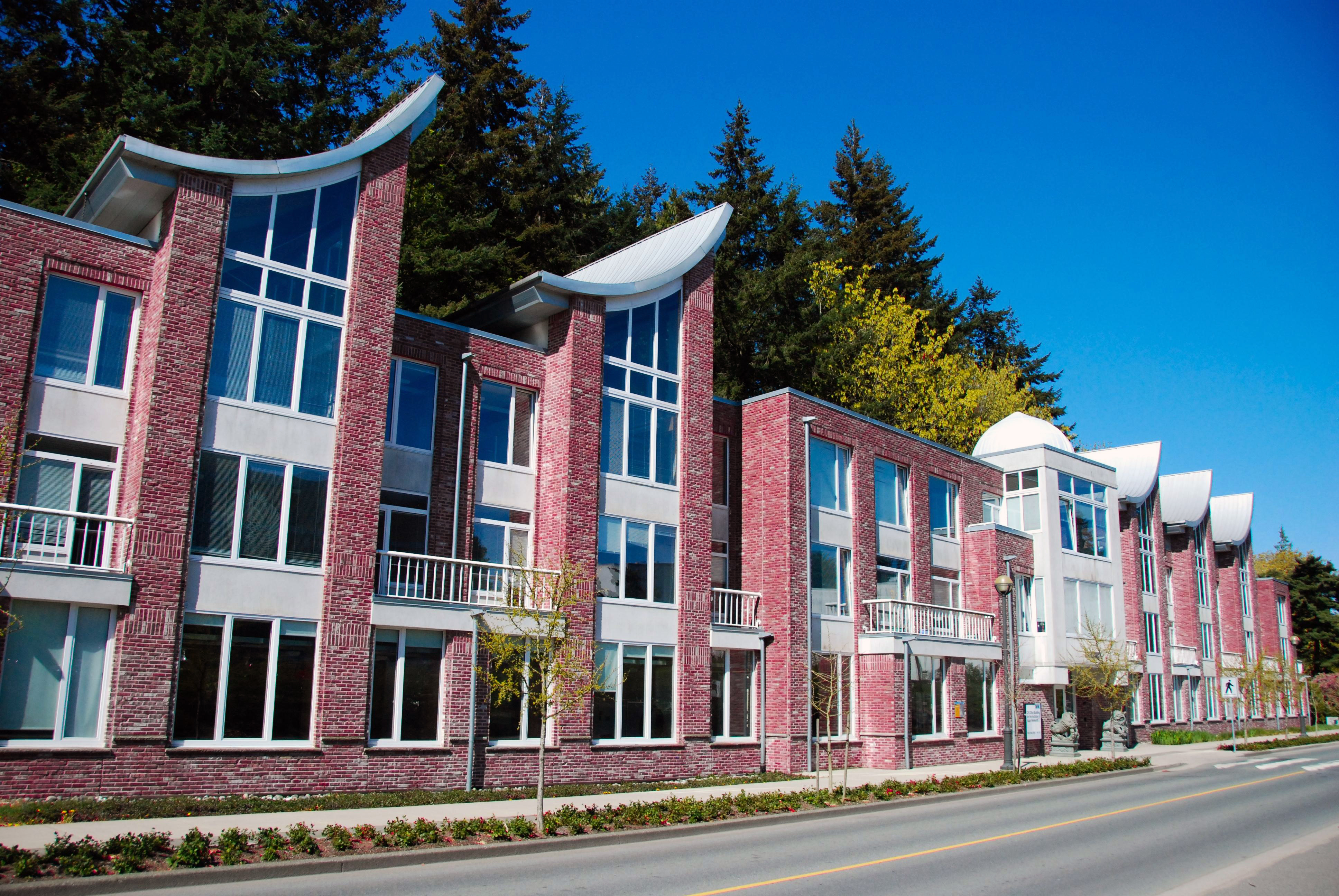By Lizzie George
As the largest faculty on campus, the Faculty of Arts occupies many of UBC’s most iconic buildings. Some have been here longer than others, but all have a unique history. Join us on a trip through UBC Arts’ past, where we will uncover archival photos of UBC buildings from decades gone by, with the help of the UBC Archives Photograph Collections.
Stores Road Annex (Linguistics Labs) – 1919
Built in 1919, the Linguistics labs building is celebrating its 100th year this year, making it the oldest academic building on campus.
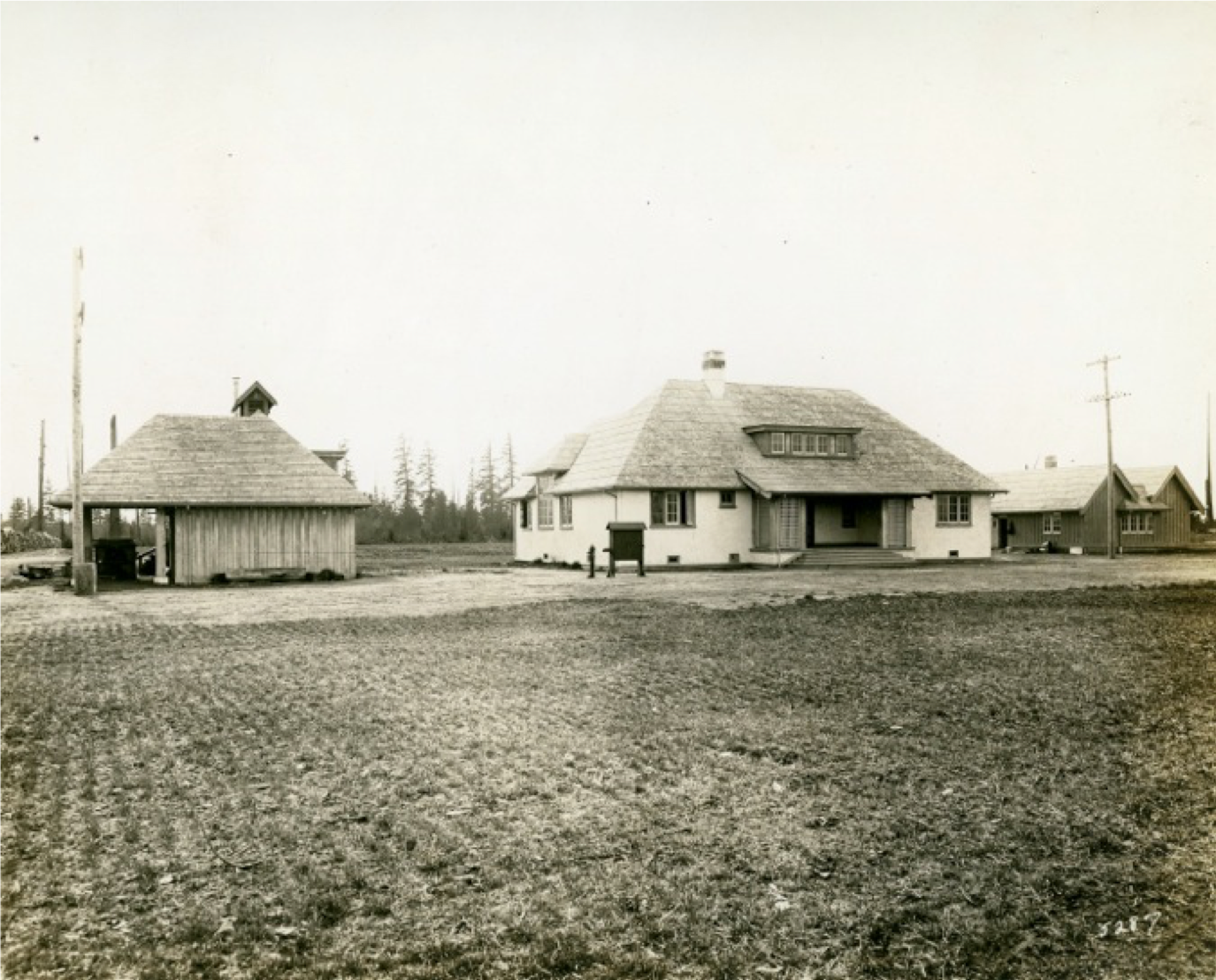

An early, undated photo of the Stores Road Annex (before 1923). Photo provided by Murray Schellenberg.
Built on a plot of land that was offered to WWI veterans, the building was first used to train returning soldiers and their wives in agricultural practices. Originally built near Main Mall and Agronomy Road between the Dairy Barn and Incubators Building (both now demolished), it was moved to its current location behind the MacLeod building in 1962. The Linguistics department moved into the building in 2000.
Linguistics is celebrating its 50th anniversary as a department this year, coinciding with the building’s centenary.
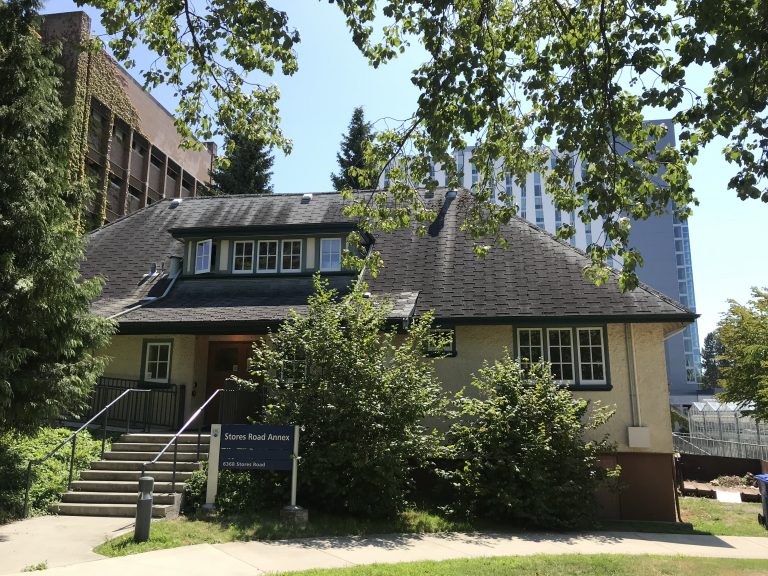

The Stores Road Annex in 2019
Pictured below: WWI veterans’ wives in front of what is now Stores Road Annex. The women were taking a 6-week course on farming. The photograph was published in the Vancouver Daily World newspaper on Jan 19, 1921. Photos courtesy of Murray Schellenberg.
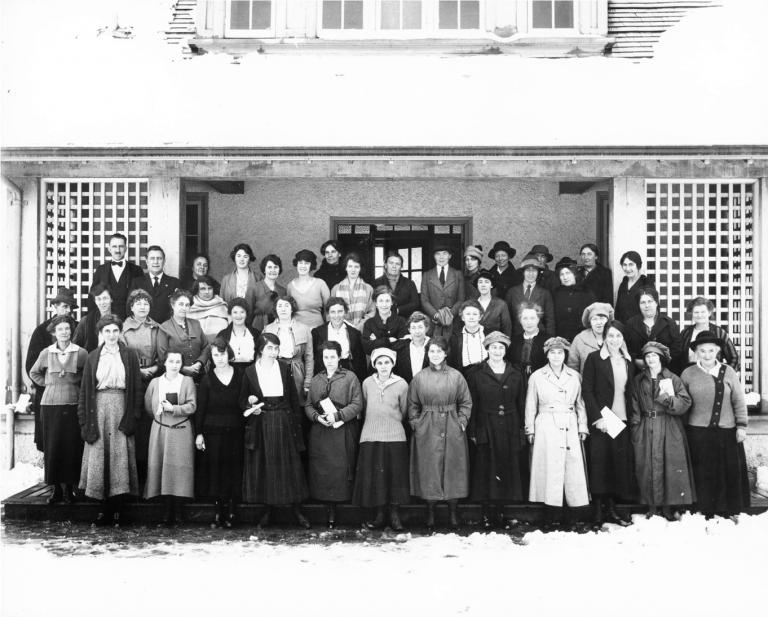

Photo by Stuart Thomson; City of Vancouver Archives; AM 1535-: CVA 99-1393 *from a scrapbook of UBC clippings
Main Library (Irving K. Barber Learning Centre) – 1925
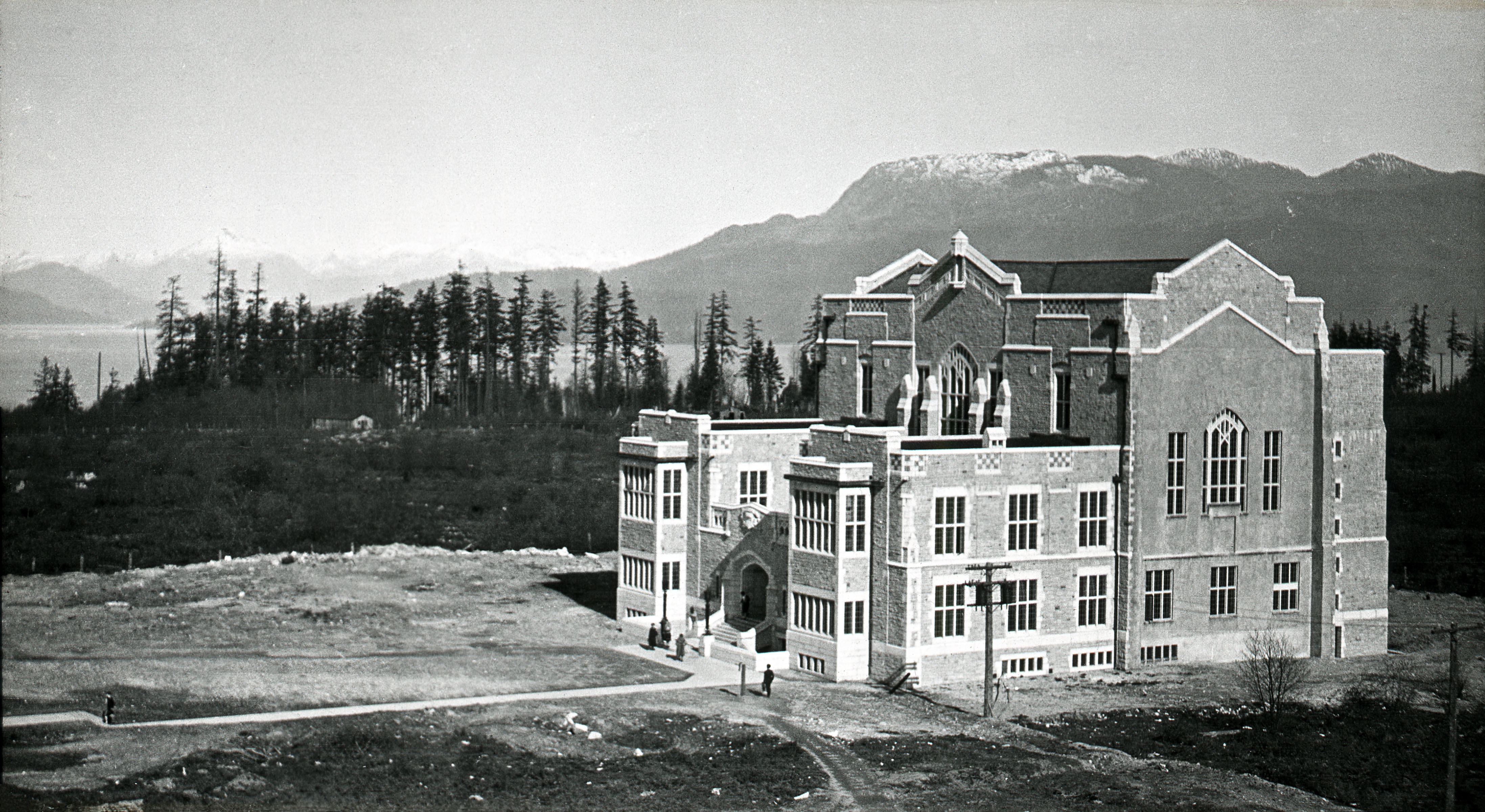

The recently completed Main Library (IKB) in 1925. (UBC Archives, Photo by Unknown [UBC 1.1/16349])
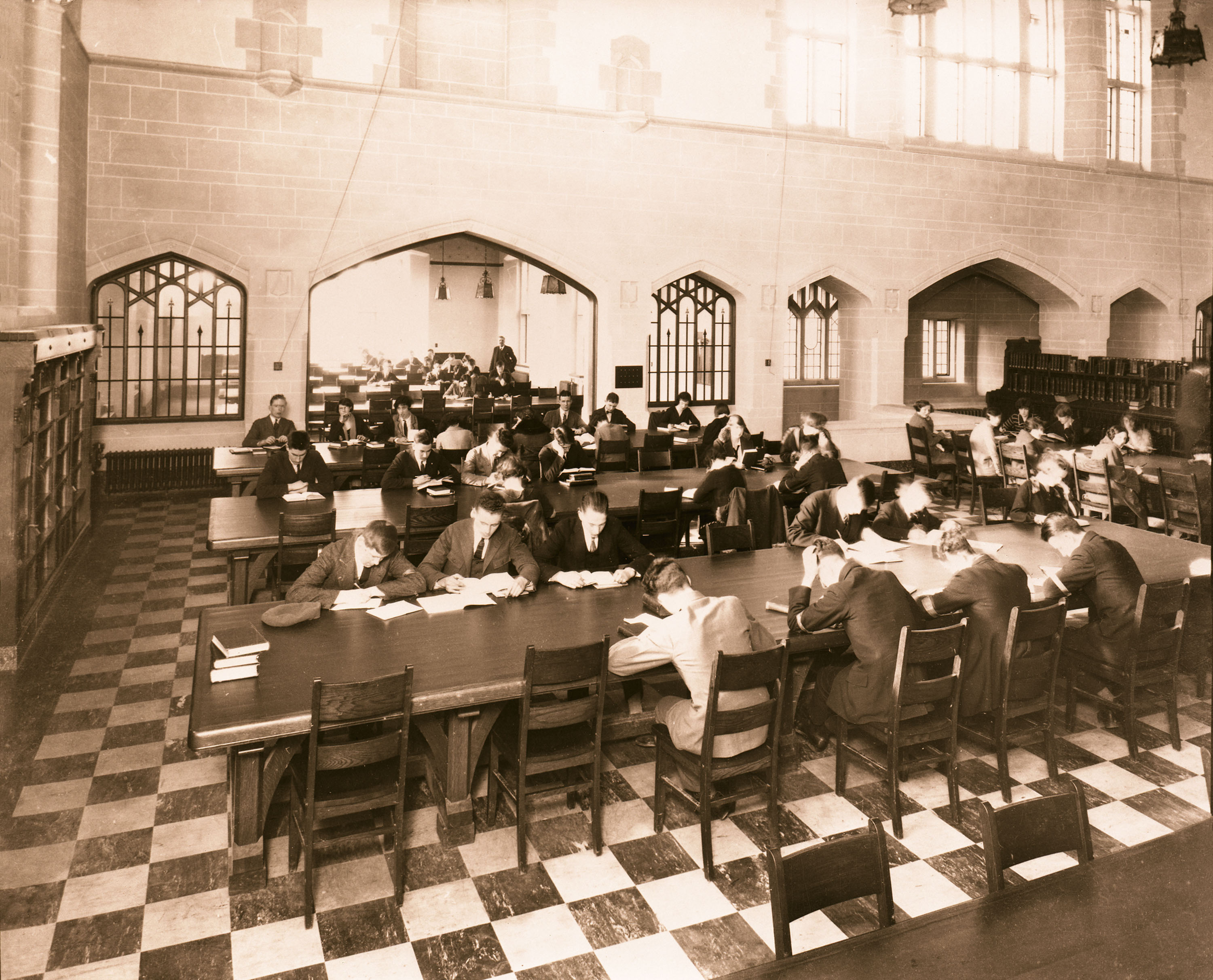

Students studying away in the Main Library concourse (now the Chapman Learning Commons) in 1925. (UBC Archives, Unknown. UBC 1.1/1064)
Though not an Arts Building per se, every UBC Arts student has stepped foot in here at some point during their studies. Whether it be for checking out books for a research paper, or simply needing a quiet place to study, the Main Library/IKB has served us well for almost a century.
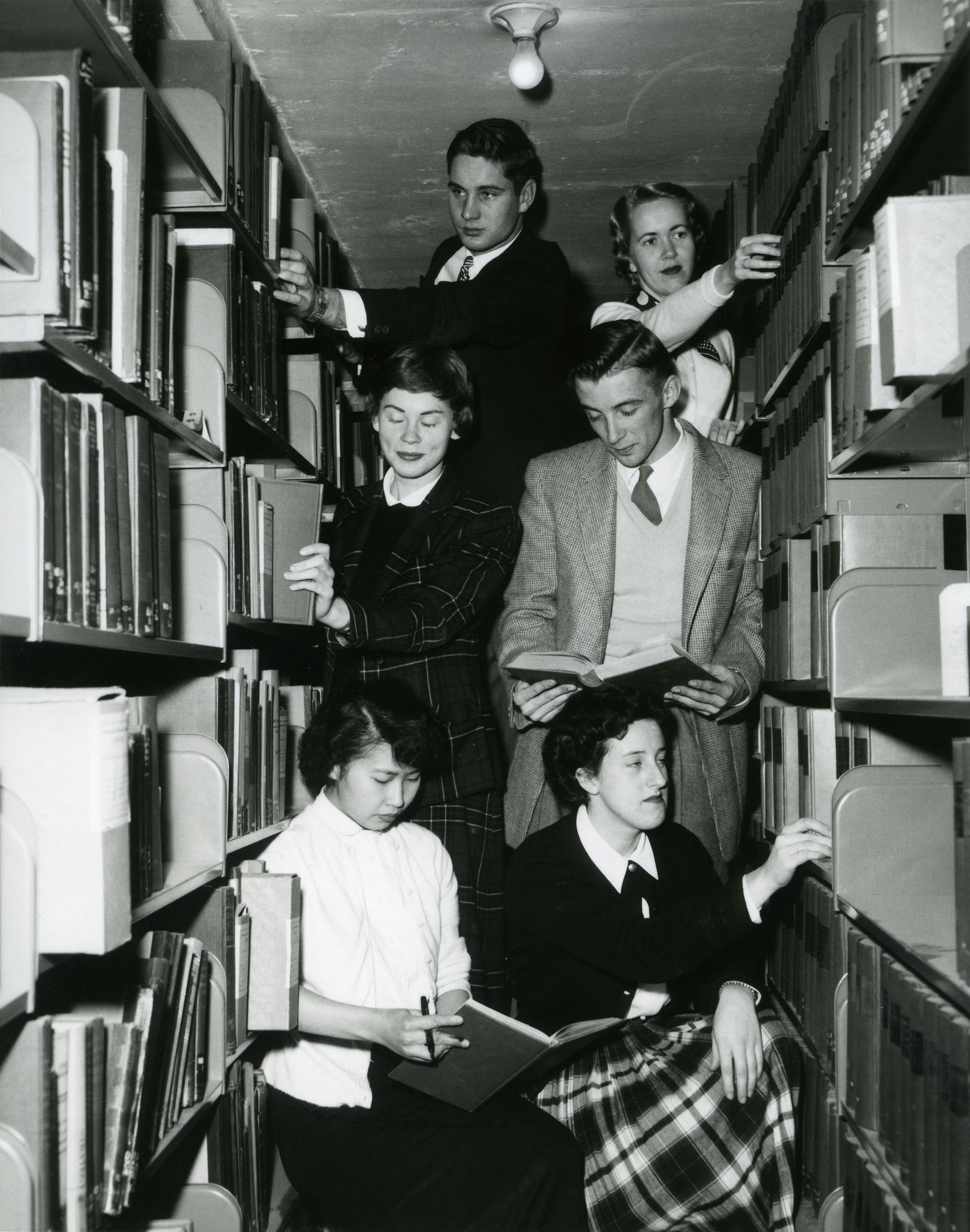

Posed picture of students dramatizing overcrowding in the Main Library, 1956. (UBC Archives, Unknown. UBC 1.1/6644-2)
The Irving K. Barber Learning Centre (formerly known as the Main Library) was built in 1925. The original Main Library was designed by the university’s architects Sharp and Thompson (later Thompson, Berwick, Pratt and Partners) in collaboration with UBC’s first librarian, John Ridington. The rebuilding and remodelling of the Main Library into the IKB Learning Centre was completed in 2008.
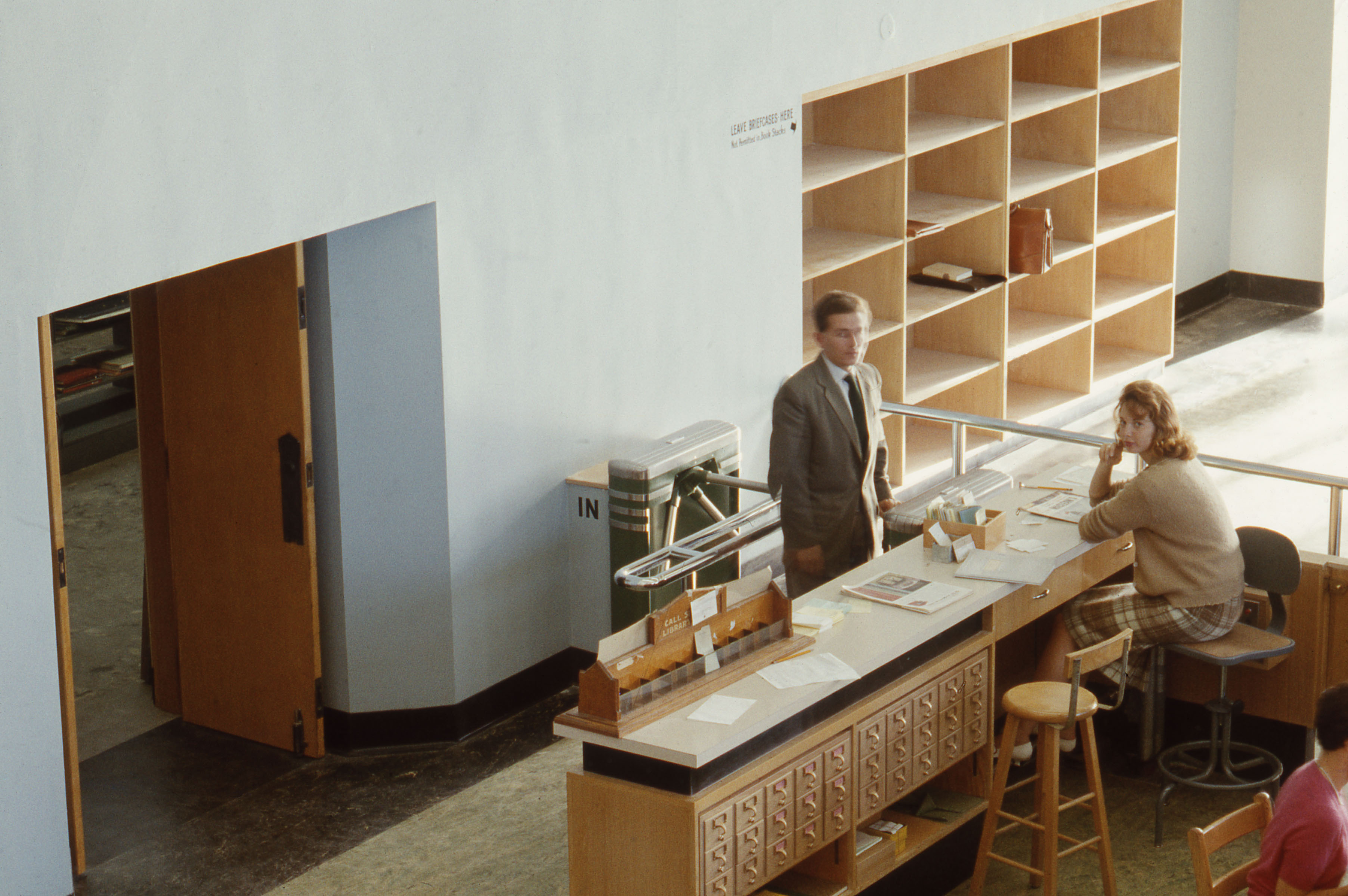

Reference desk in the Ridington room, 1960s. (UBC Archives, Unknown [UBC 1.1/9124])
Geography Building – 1924-25
This wood-frame and stucco building was built in 1925 as one of the “semi-permanent buildings” on campus. Originally the Applied Sciences building, it housed Geography, Geology, Civil Engineering, Zoology, Forestry, and Botany. It was renamed Forestry and Geology in 1951.
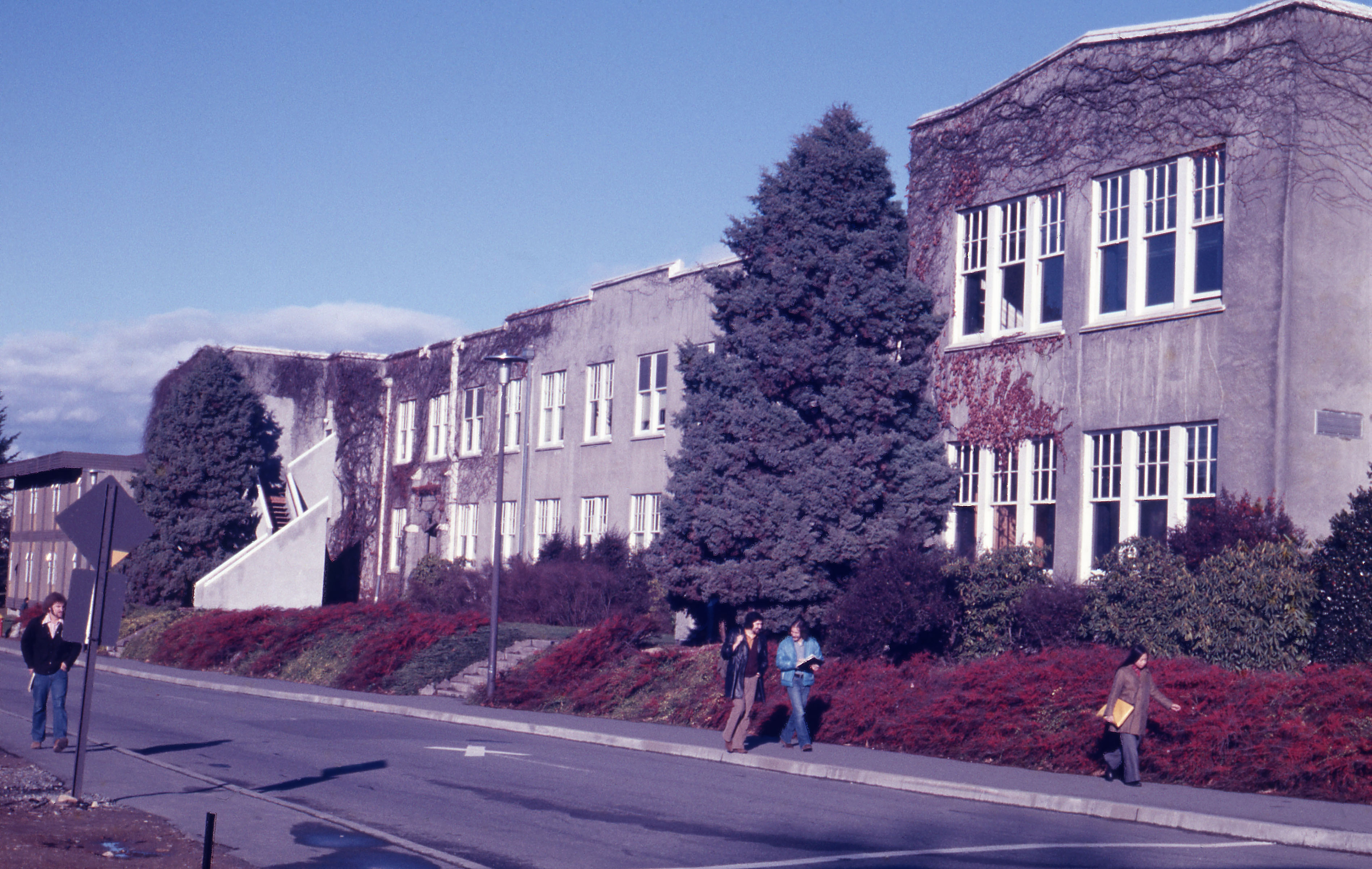

The Geography building viewed from West Mall in the 1970s (UBC Archives, Unknown [UBC 41.1/1558-1])
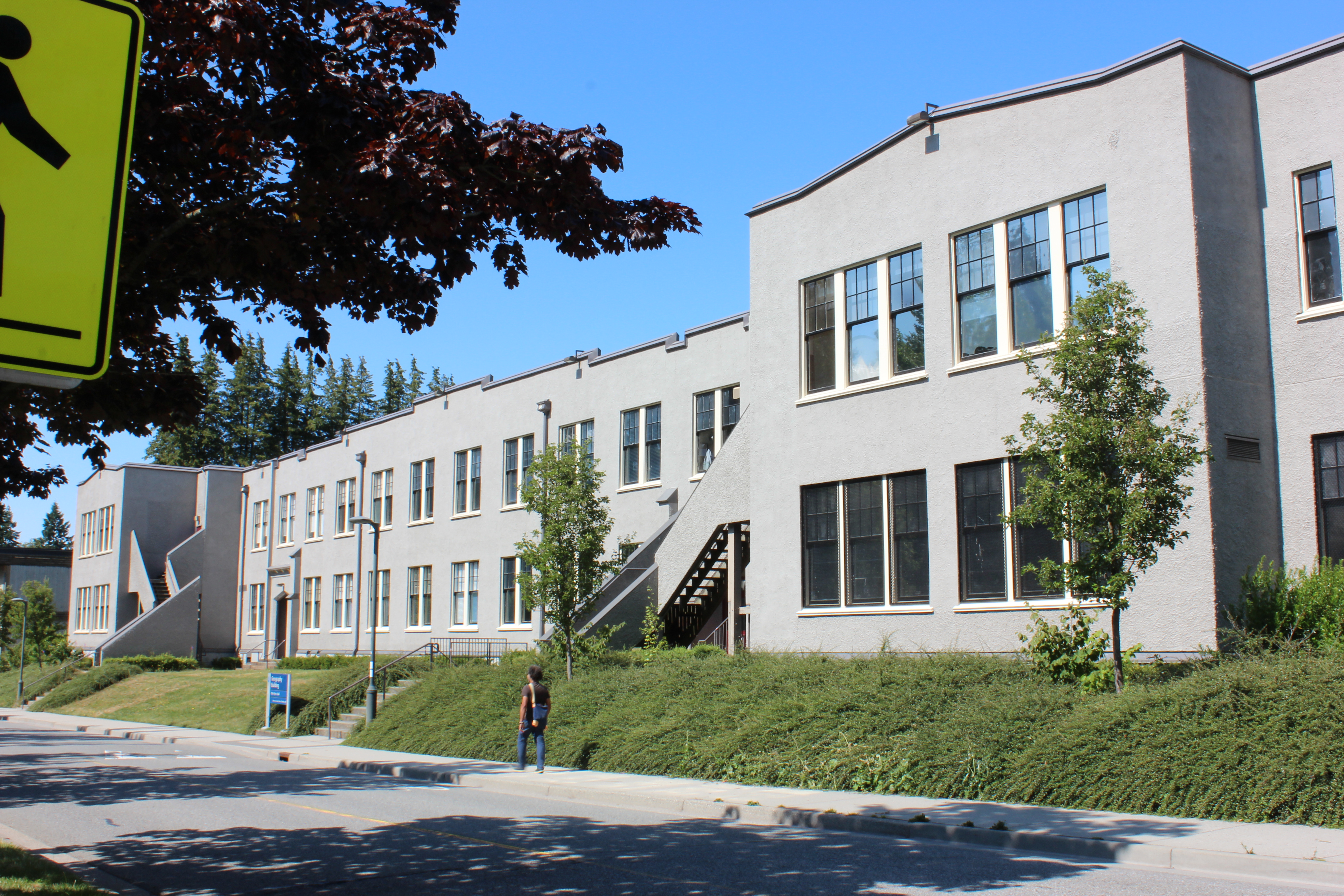

The Geography building from West Mall in 2019
“When the University of British Columbia moved to its present Point Grey site in the Fall of 1925 the Department of Geology and Geography was placed in a “temporary” building. That building is the present Geography Building, completely rebuilt inside during the late 1970s, and still standing after more than 60 years as a “temporary” building.”
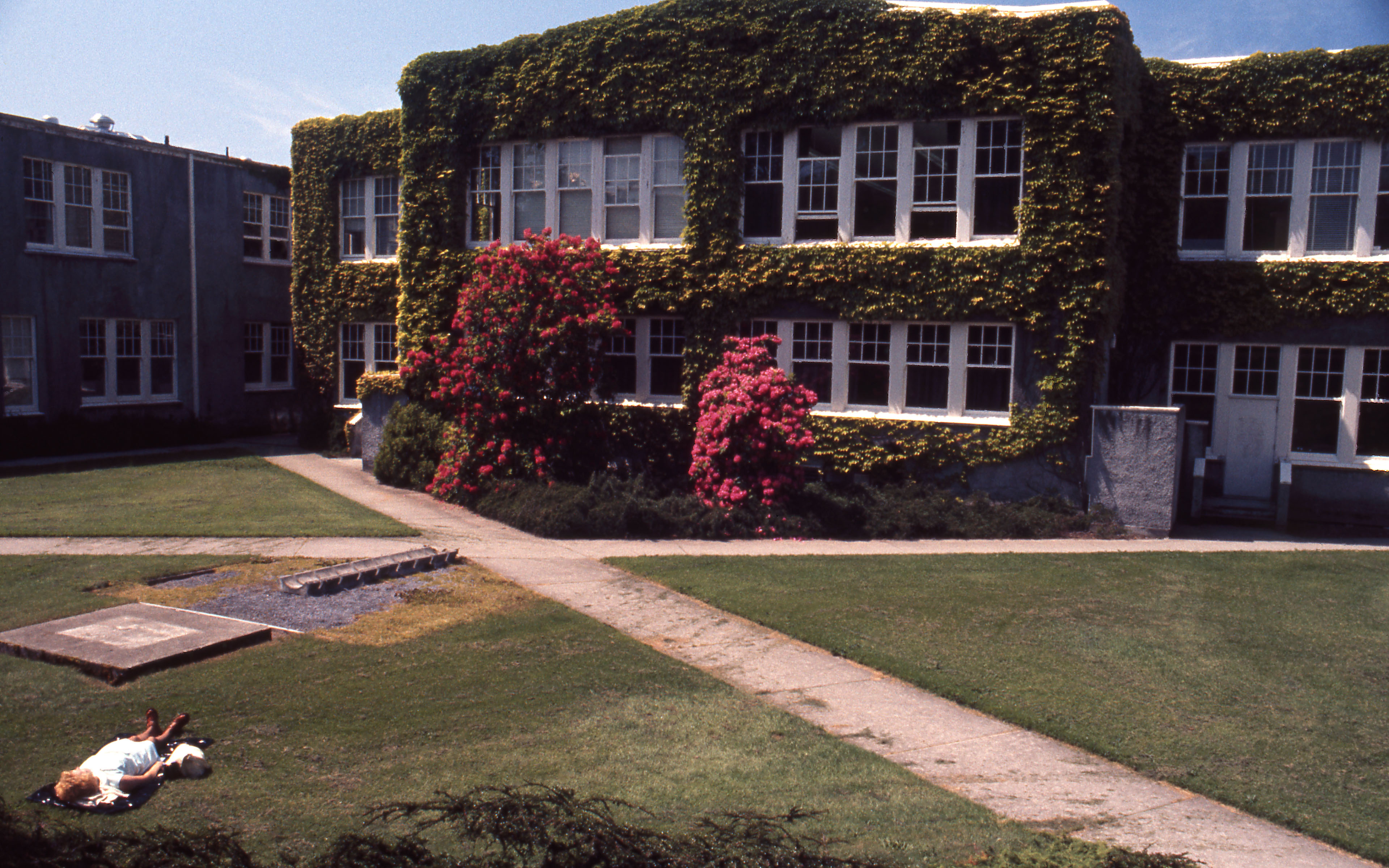

The backside of the Geography building in the 1970s. (UBC Archives, Unknown [UBC 41.1/1558-2])
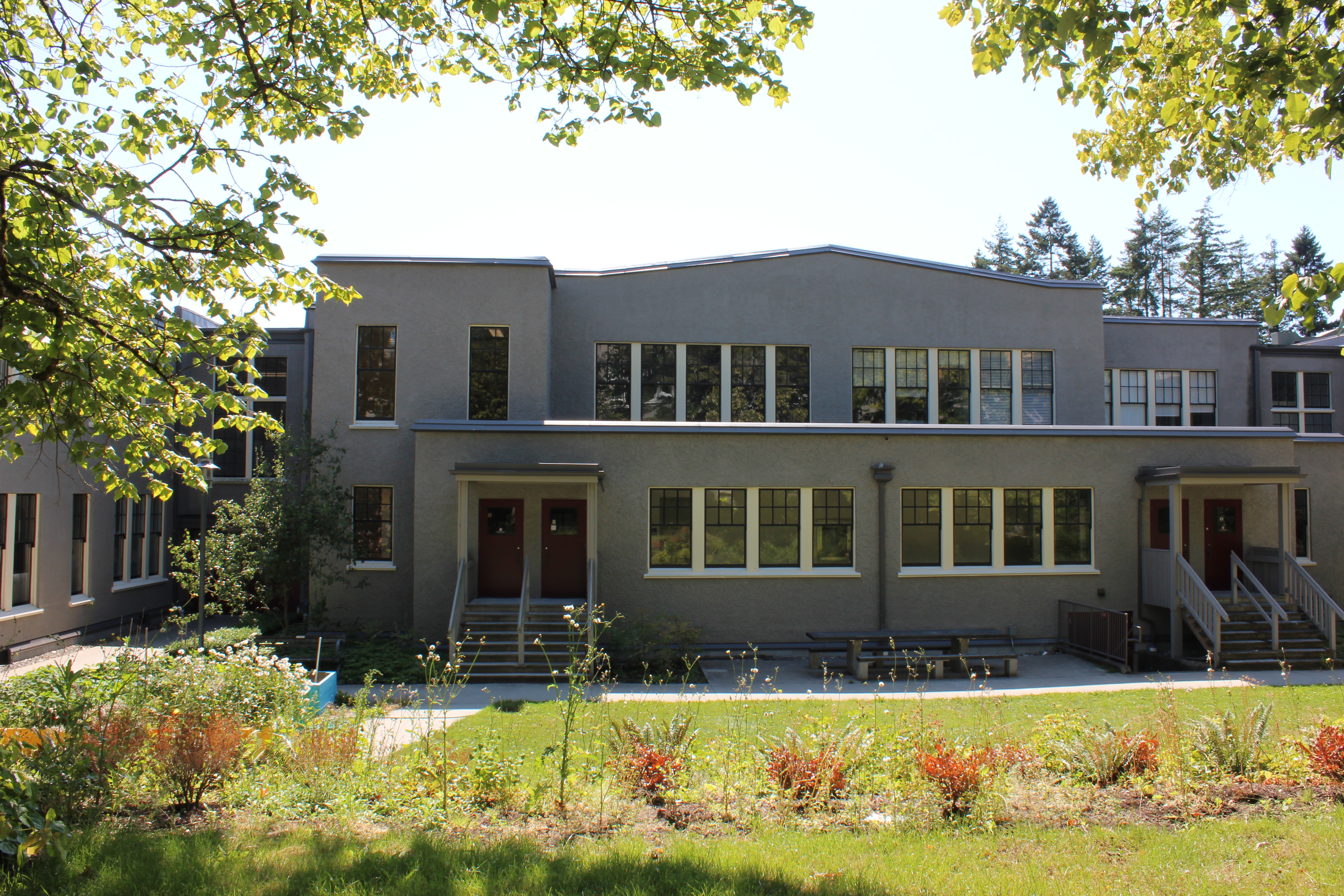

The backside of the Geography building in 2019
Iona Building – 1927
From the time it was built in 1927 until 2015, the “Collegiate Gothic” style Iona Building belonged to the Vancouver School of Theology, an institution independent from UBC. In 2015, it became home to the Vancouver School of Economics. An article from Campus and Community Planning provides a timeline of its history:
“The Iona Building was originally built to house the newly formed Union College of British Columbia, a teaching arm of the United Church. The cornerstone for the West Wing was laid on May 21, 1927. The iconic tower with its stained glass windows was added in the 1930s, and a new East Wing in the 1950s. In 1972, Union College merged with the Anglican Theological College of BC to form the Vancouver School of Theology.”
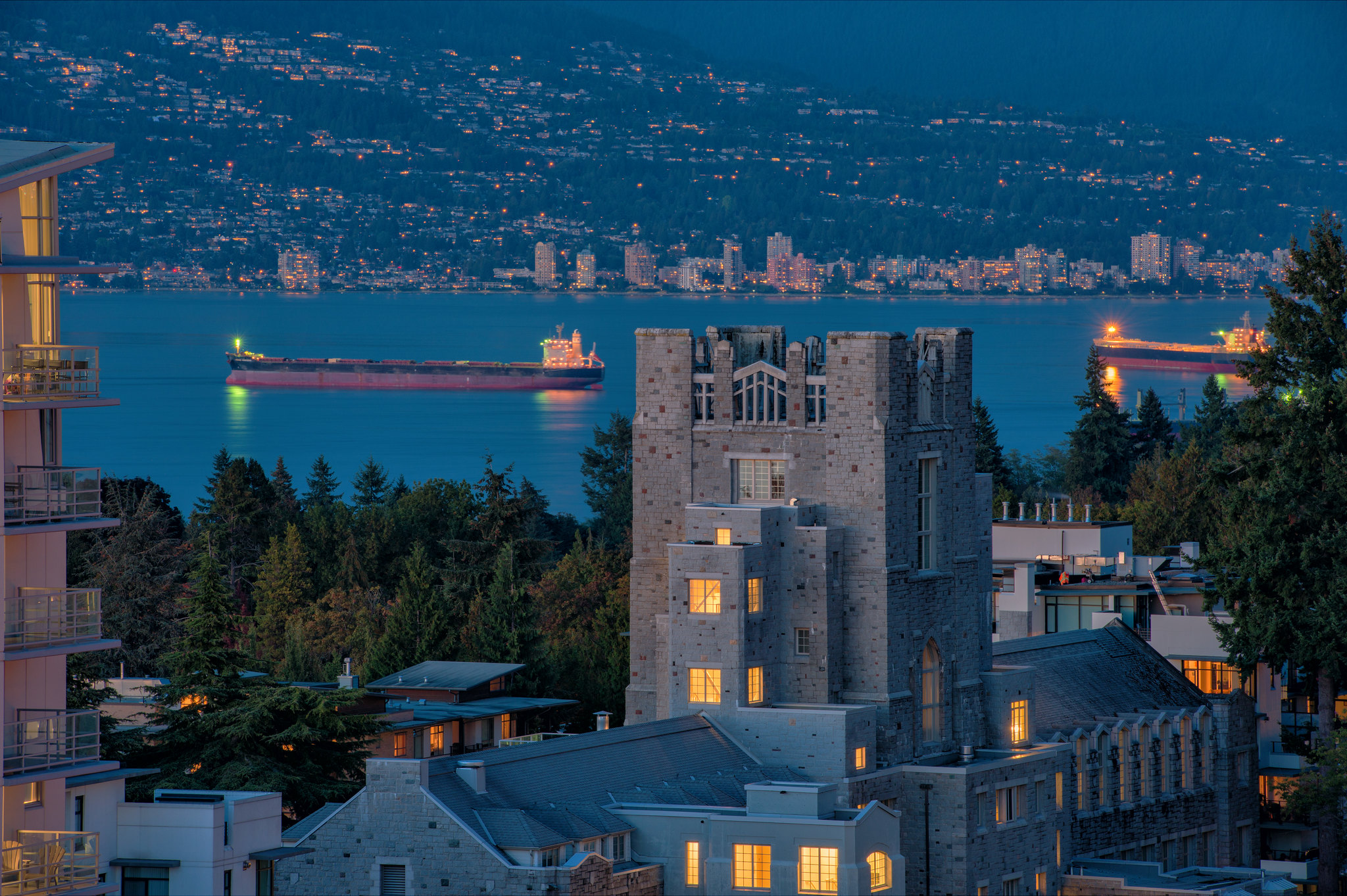

Iona building and downtown Vancouver at dusk, 2014. (Photo by Don Erhardt, UBC Brand and Marketing).
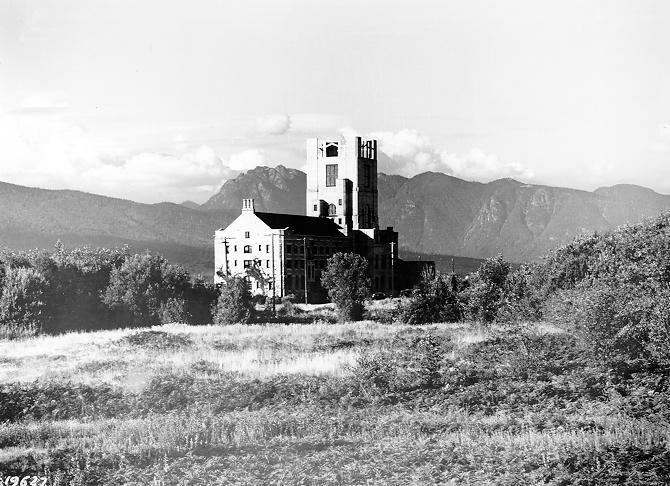

Union College in August, 1936 (UBC Archives, Leonard Frank [UBC 1.1/1532]).
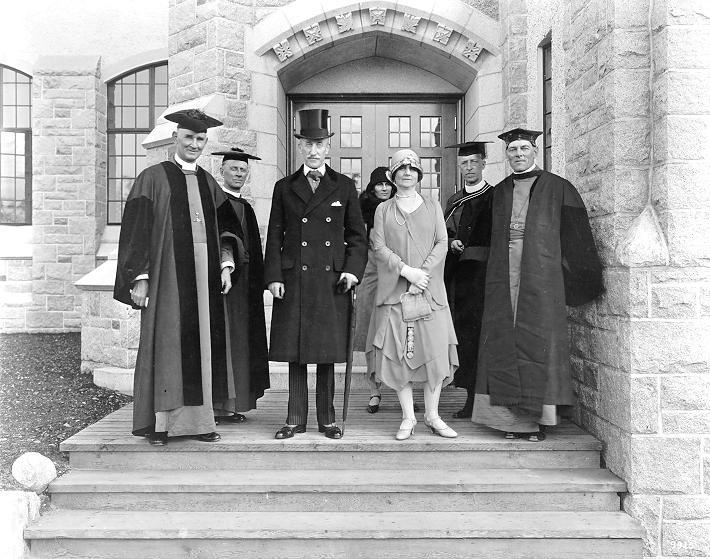

Opening of Union College, May 1928 (UBC Archives, Unknown [UBC 1.1/2606]).
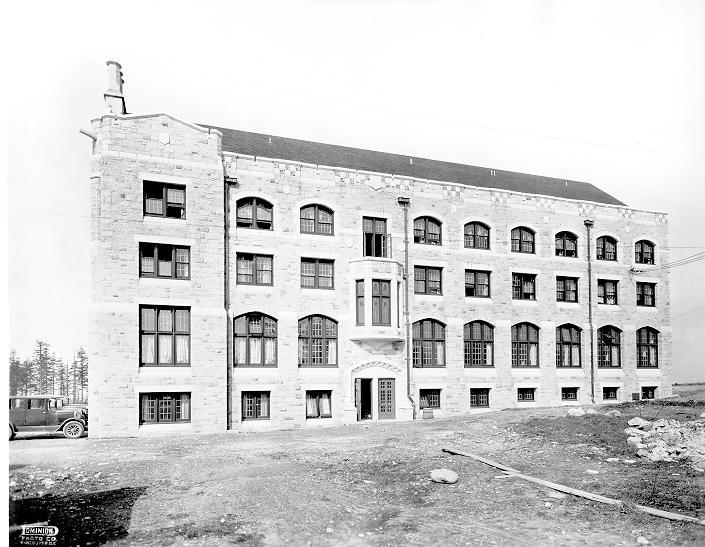

Union College in 1928, before the tower was built (UBC Archives, Dominion Photo Co. [UBC 1.1/133]).
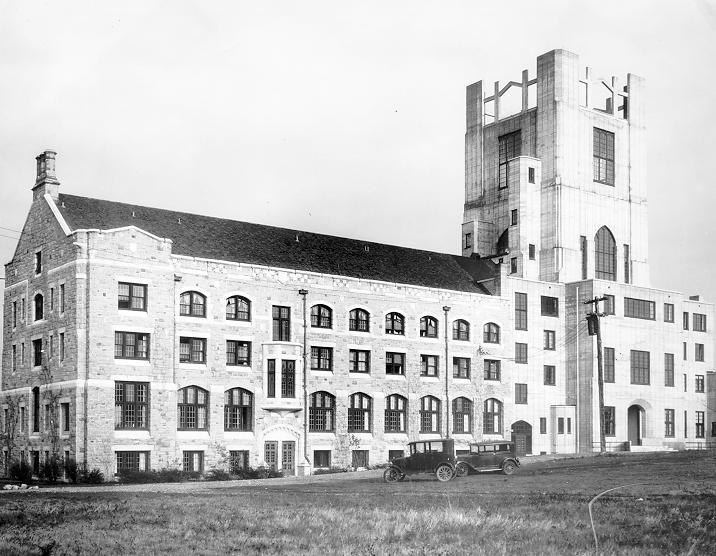

Union College in November, 1934, with the newly built tower (UBC Archives, Leonard Frank [UBC 1.1/1535]).
Buchanan Building – 1958
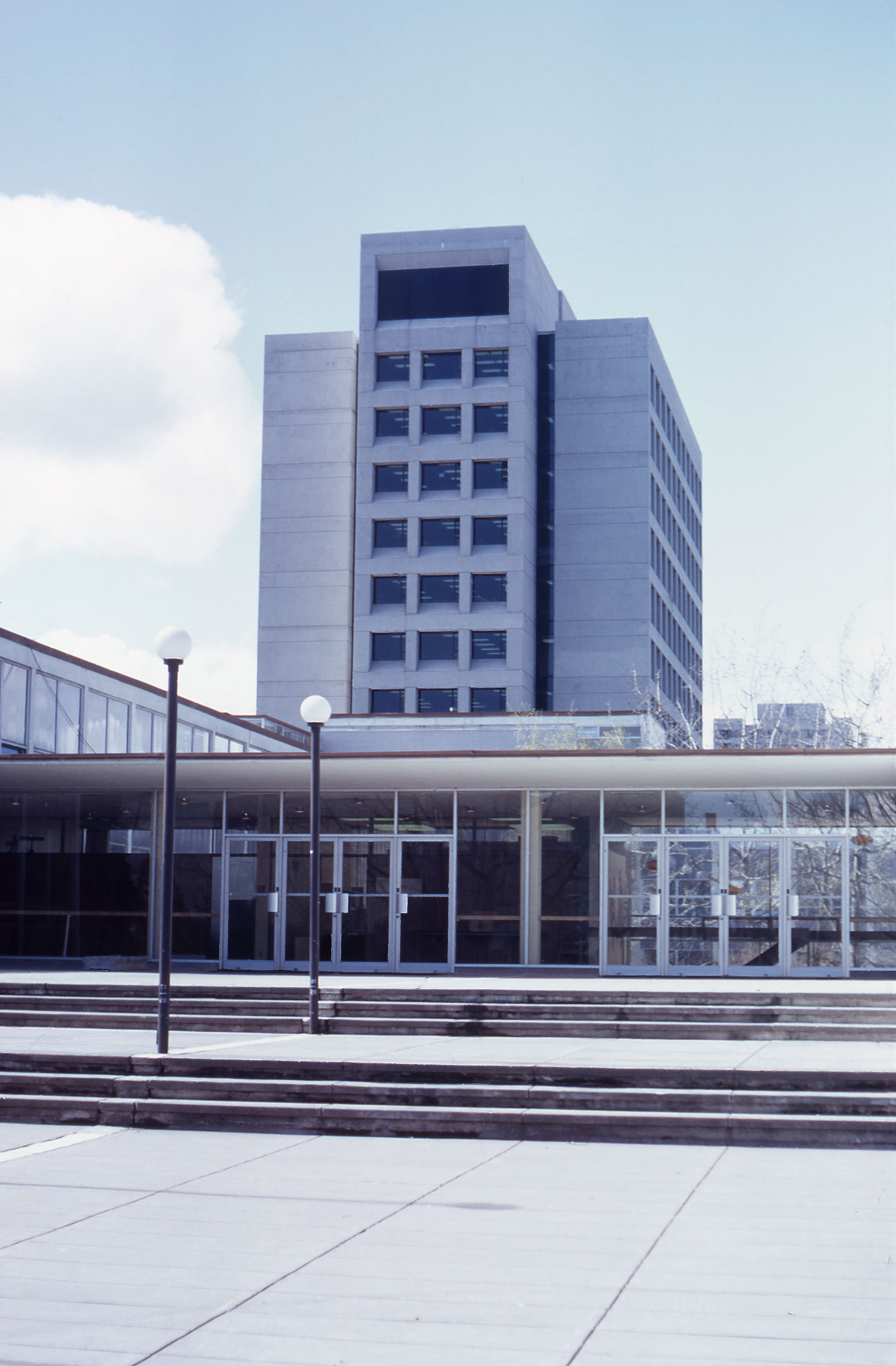

Entrance to Buchanan with Buchanan Tower in background, 1973. (UBC Archives, Photo by Unknown. UBC 93.1/114)
As the site of the Dean of Arts office, Arts Advising, and many Arts course classrooms, Buchanan is the faculty’s main hub. The 5-wing complex was built in 1958-1960 to accommodate a rapidly expanding student body and a renewed interest in the liberal arts (the number of students at UBC tripled after WW2). Even though students sometimes lament how unattractive or outdated Buchanan is, many architecture and design enthusiasts consider it to be a fine example of Modernist mid-century architecture.
From a Concept Design Report published by UBC Community and Campus planning:
“The Buchanan Courtyards are valued as the campus’ finest example of Modernist civic space, designed to culturally elevate and inspire the modern open and inclusive university society after the Second World War… the Courtyards helped recast this public face of the campus from a simple space with a breathtaking view to a dynamic network of social spaces incorporating that natural beauty. The design of the Courtyards signaled the University’s participation in the Modernist transformation of North American college and university campuses in the 1950s and 60s.”
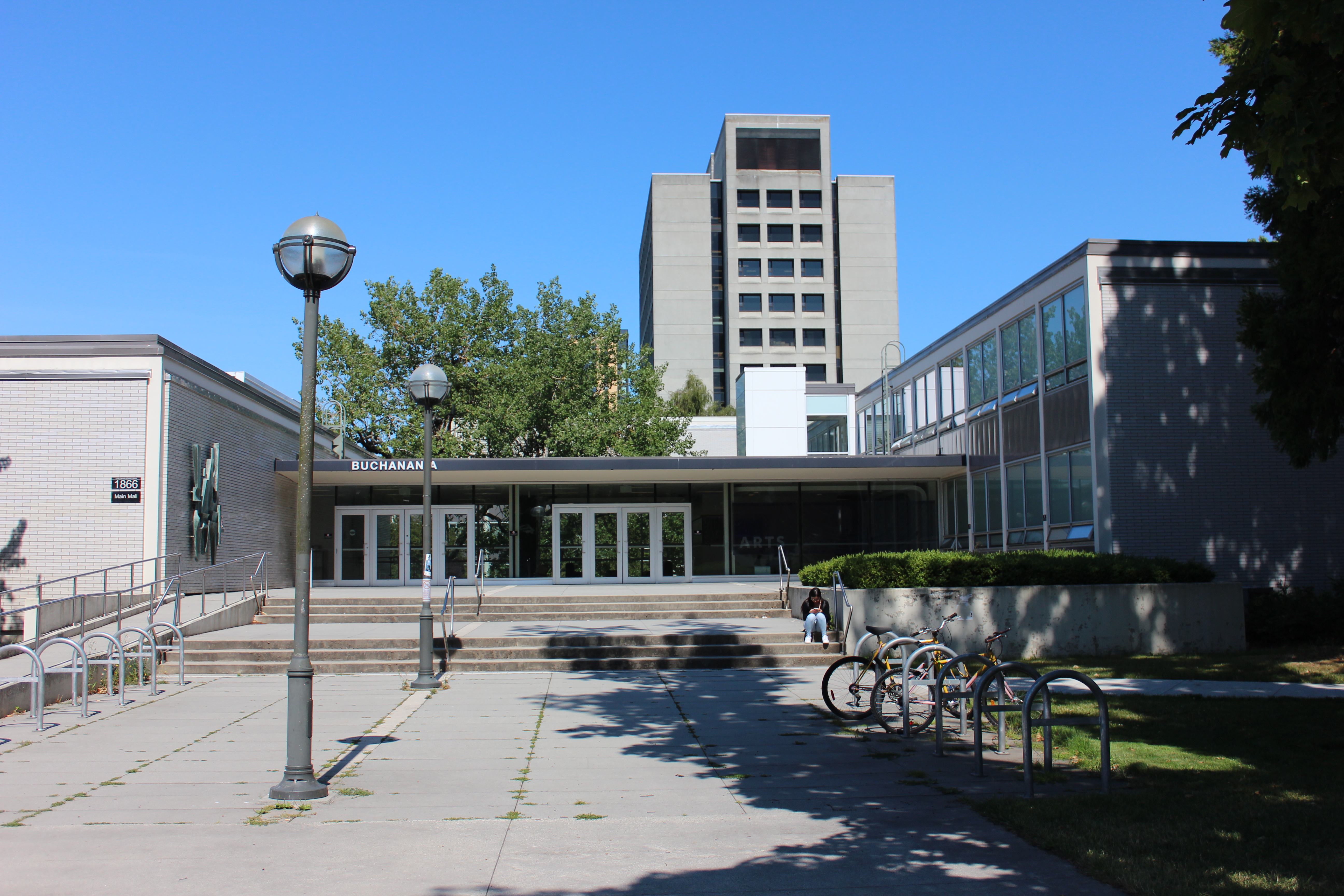

Then vs. Now: Entrance to Buchanan in 2019
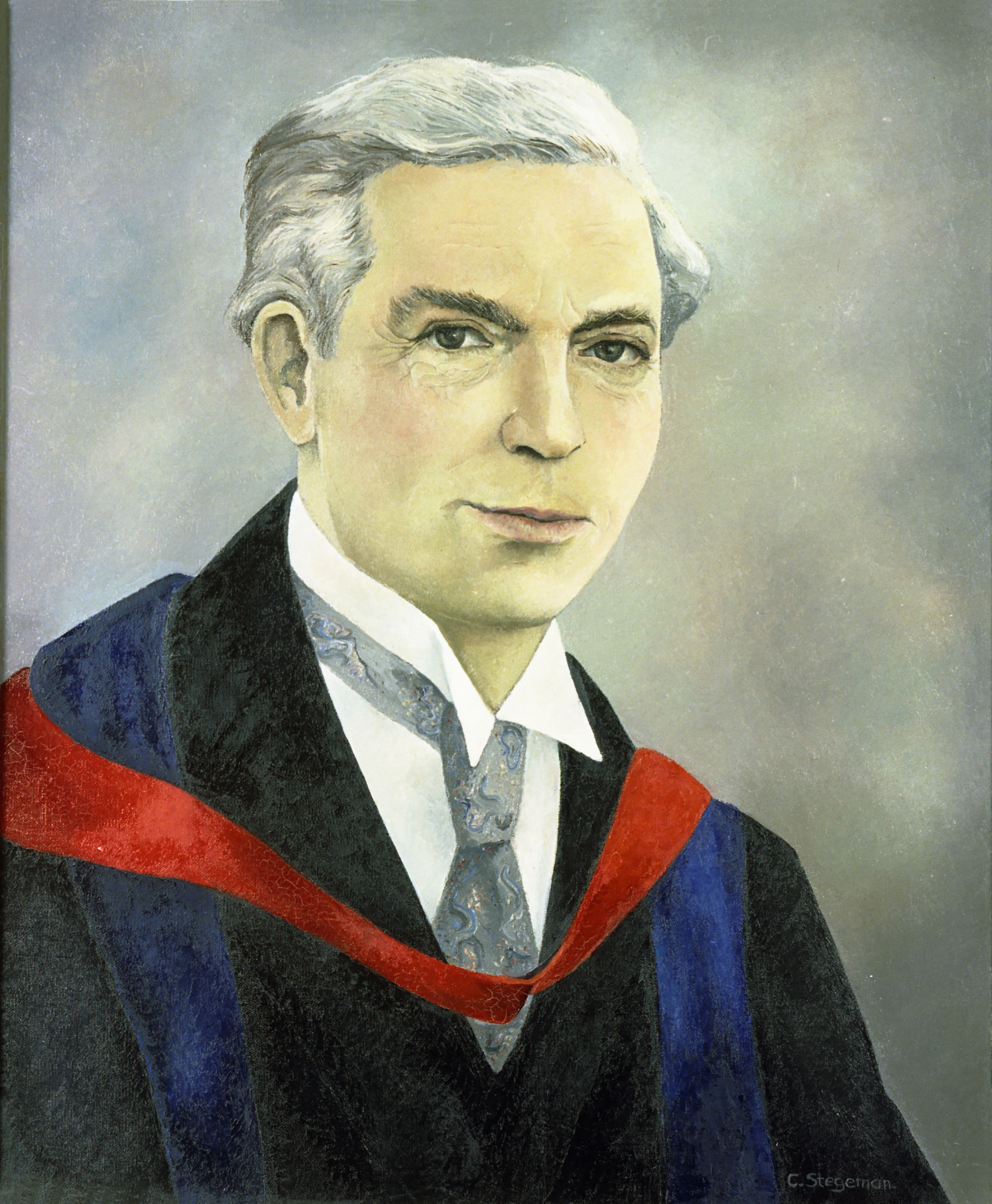

Portrait of Daniel Buchanan (Artist unknown). Served as Dean of the Faculty of Arts and Sciences from 1929-1949 (UBC Archives, Photo by Unknown [UBC 1.1/732])
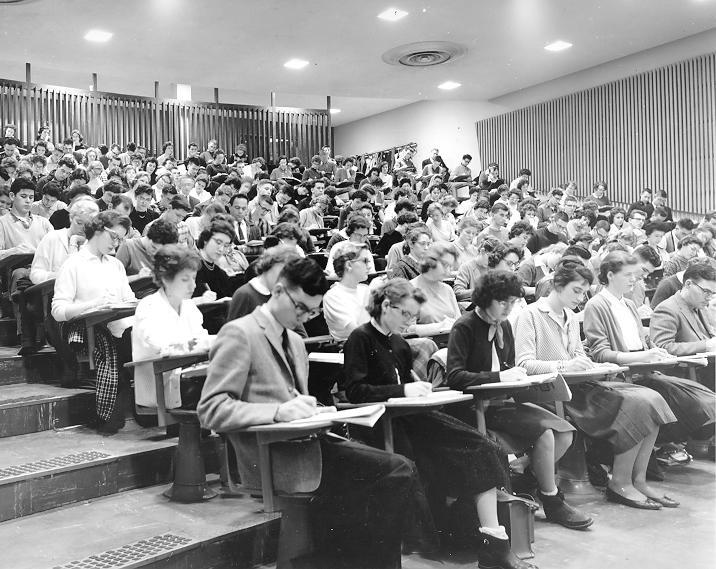

Students in a Buchanan building lecture hall in 1960 (UBC Archives, Unknown [UBC 1.1/2646]).
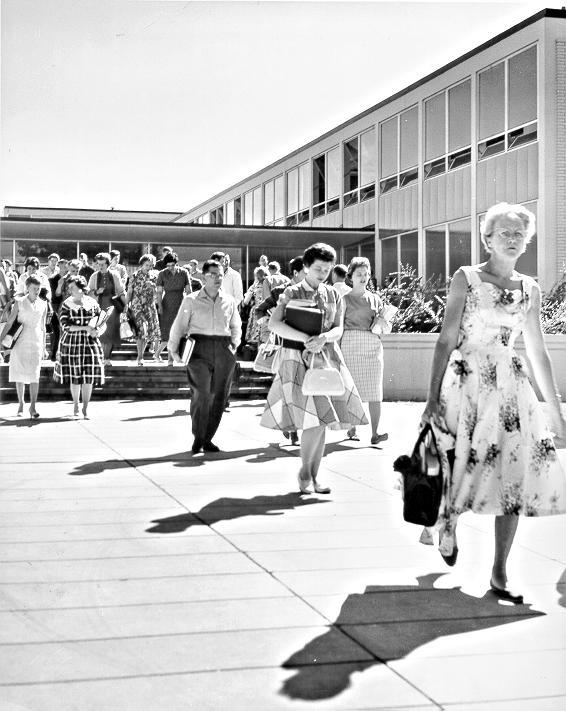

Summer Session students leaving Buchanan building, July 1960 (UBC Archives, Unknown, [UBC 41.1/2220]).
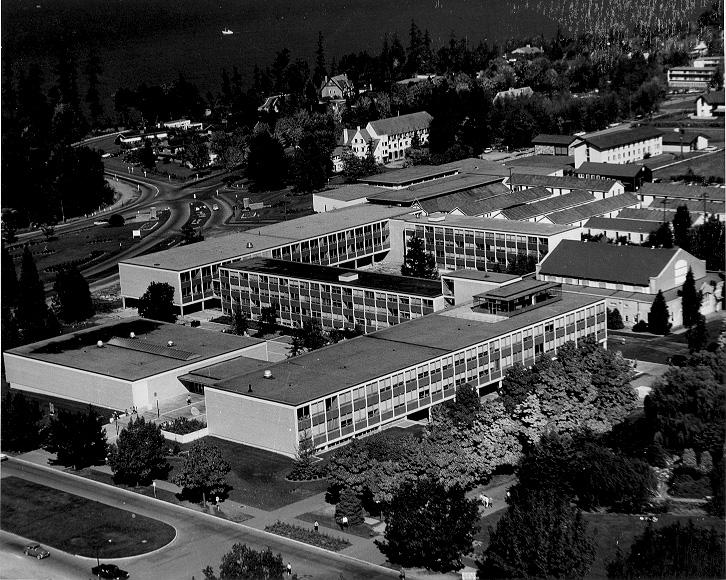

Aerial view of Buchanan building in 1960 (UBC Archives, Unknown [UBC 104.1/104])
Buchanan Tower – 1972
Buchanan Tower was constructed in 1972 as part of the Brutalist movement.
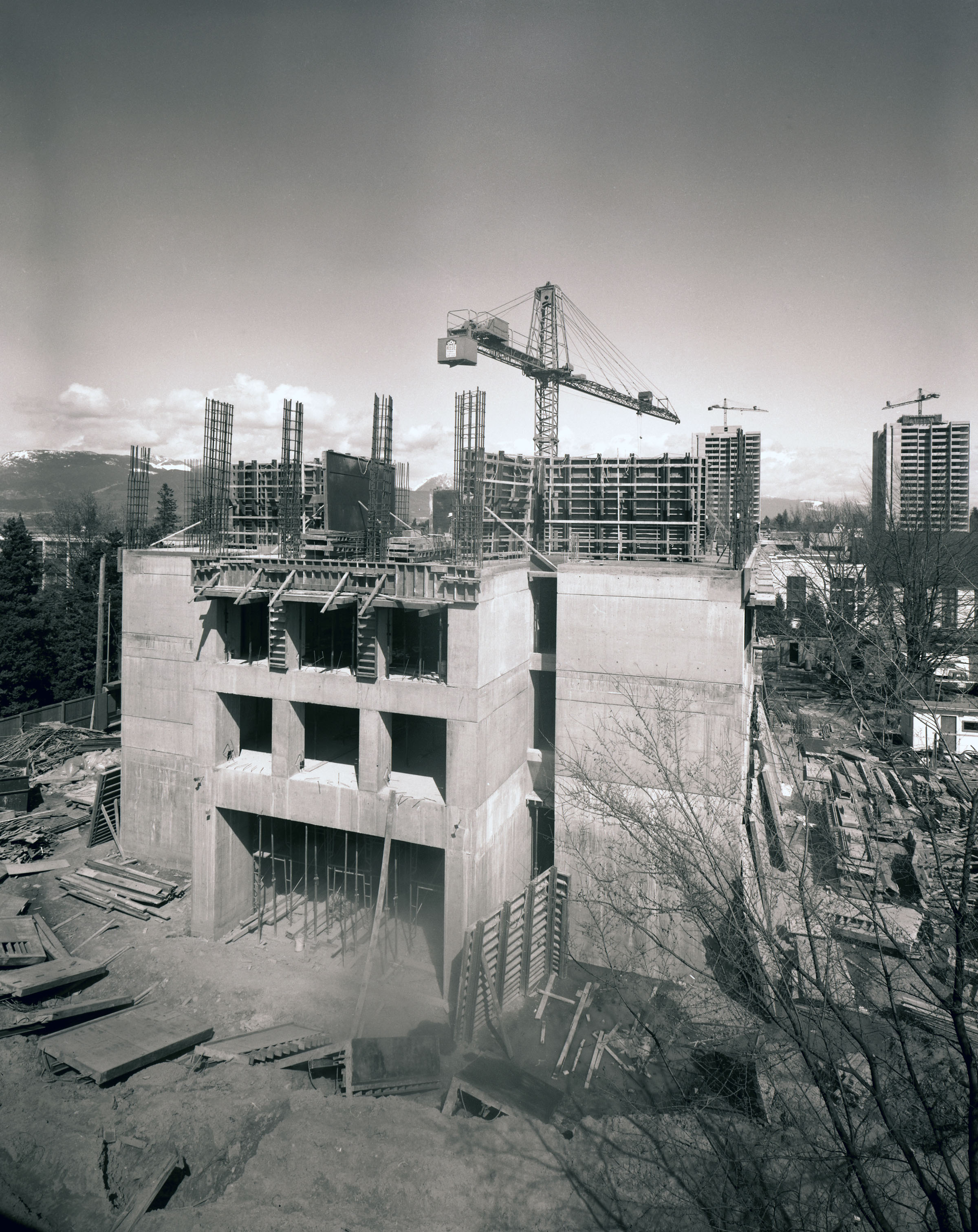

Construction of Buchanan Tower 1971 (UBC Archives, Unknown [UBC 5.2/206-2])
“Its architectural style is under the influence of Arthur Erickson who designed the MacMillan Bloedel Building in Vancouver.”
The tower houses UBC’s History and English departments. The 13-storey building has been featured in sci-fi TV shows like Supernatural and Fringe, and even made a cameo in X-Men Origins: Wolverine.
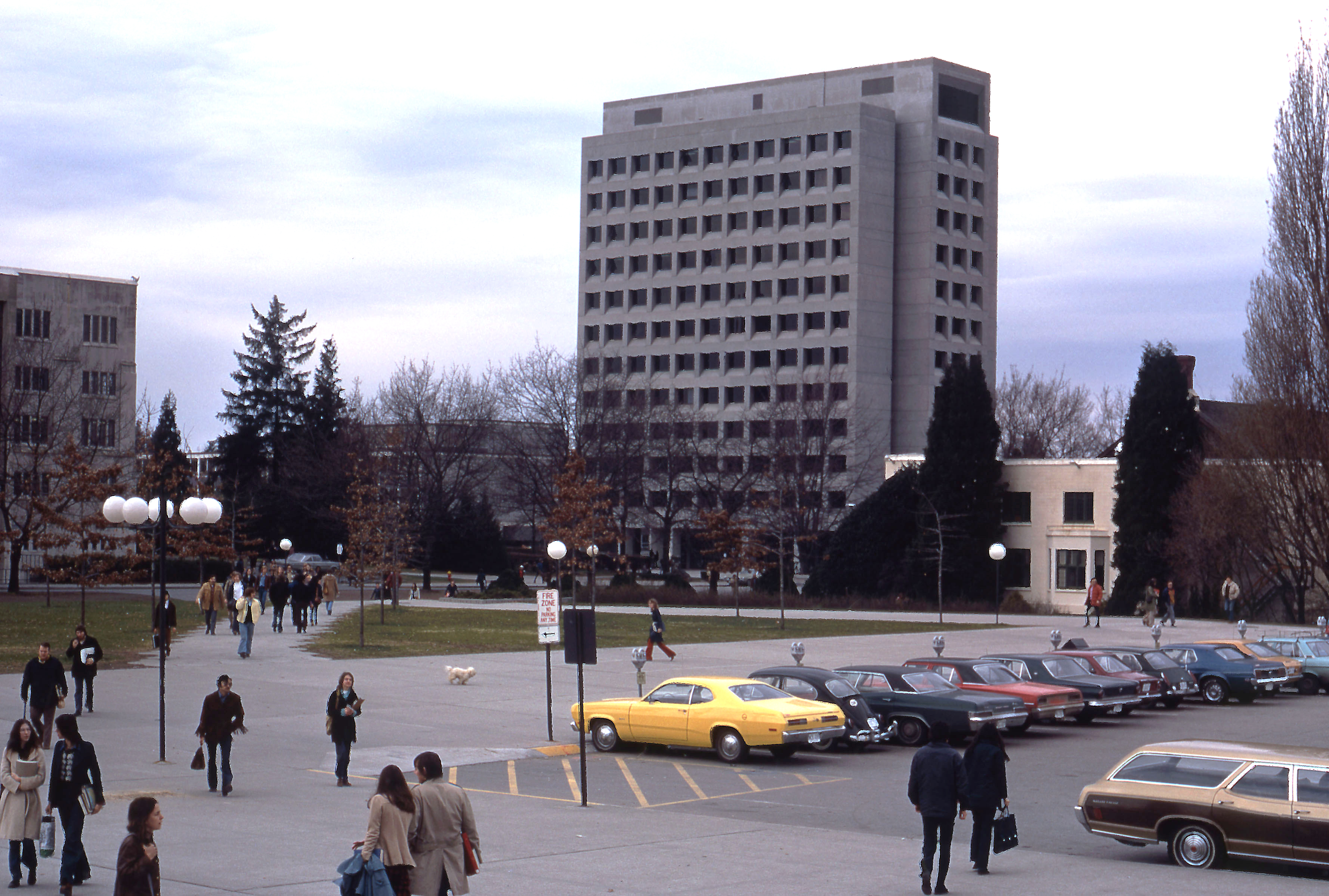

Photo of Buchanan tower from the Student Union Building in 1973 (UBC Archives, Photo by Unknown [UBC 105.1/176])


Then vs. Now: Buchanan Tower in 2019
C. K. Choi Building – 1996
The C. K. Choi building was built in 1996 and named after Cheung-Kok Choi, the major donor for this building. The building is home to the Institute for Asian Research and the Institute for European Studies. The building was not only the first green building at UBC, but also one of the first in the world.
From UBC Sustainability:
“UBC’s first green building, the C.K. Choi Building, set benchmarks worldwide when it opened in 1996. Nearly half of all building materials came from former buildings and streets, including the 400 year-old red bricks from Vancouver’s Yaletown neighbourhood and wood beams from UBC’s old Armoury. The building utilizes waterless composting toilets, saving 1000 to 1500 gallons of water per day. Potable water is only required for the low flow taps and sinks. The site is irrigated using collected rainwater and recycled greywater from the building.”
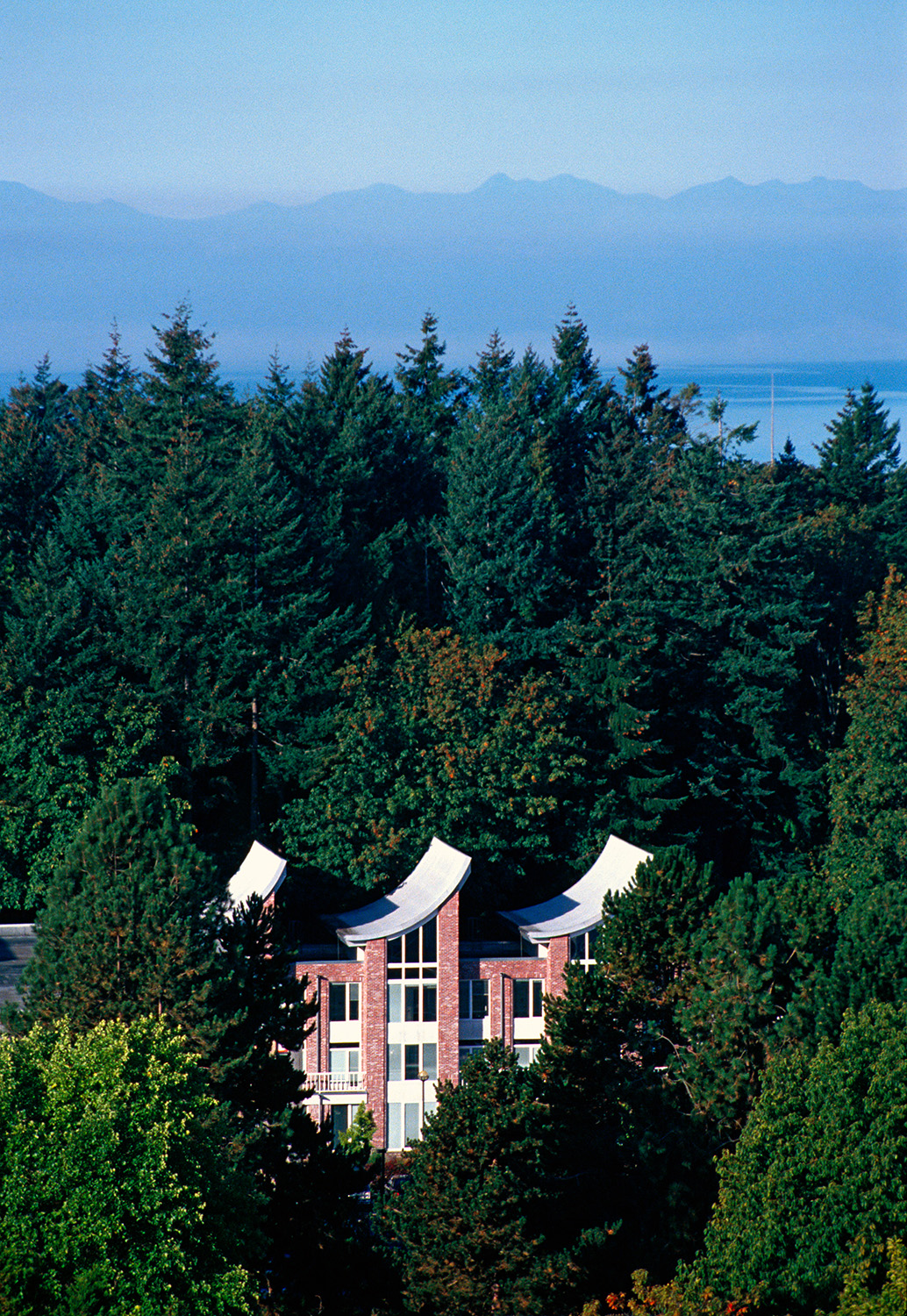

Photo of C. K. Choi building from the roof of Buchanan Tower in 2003. Photo by Martin Dee.
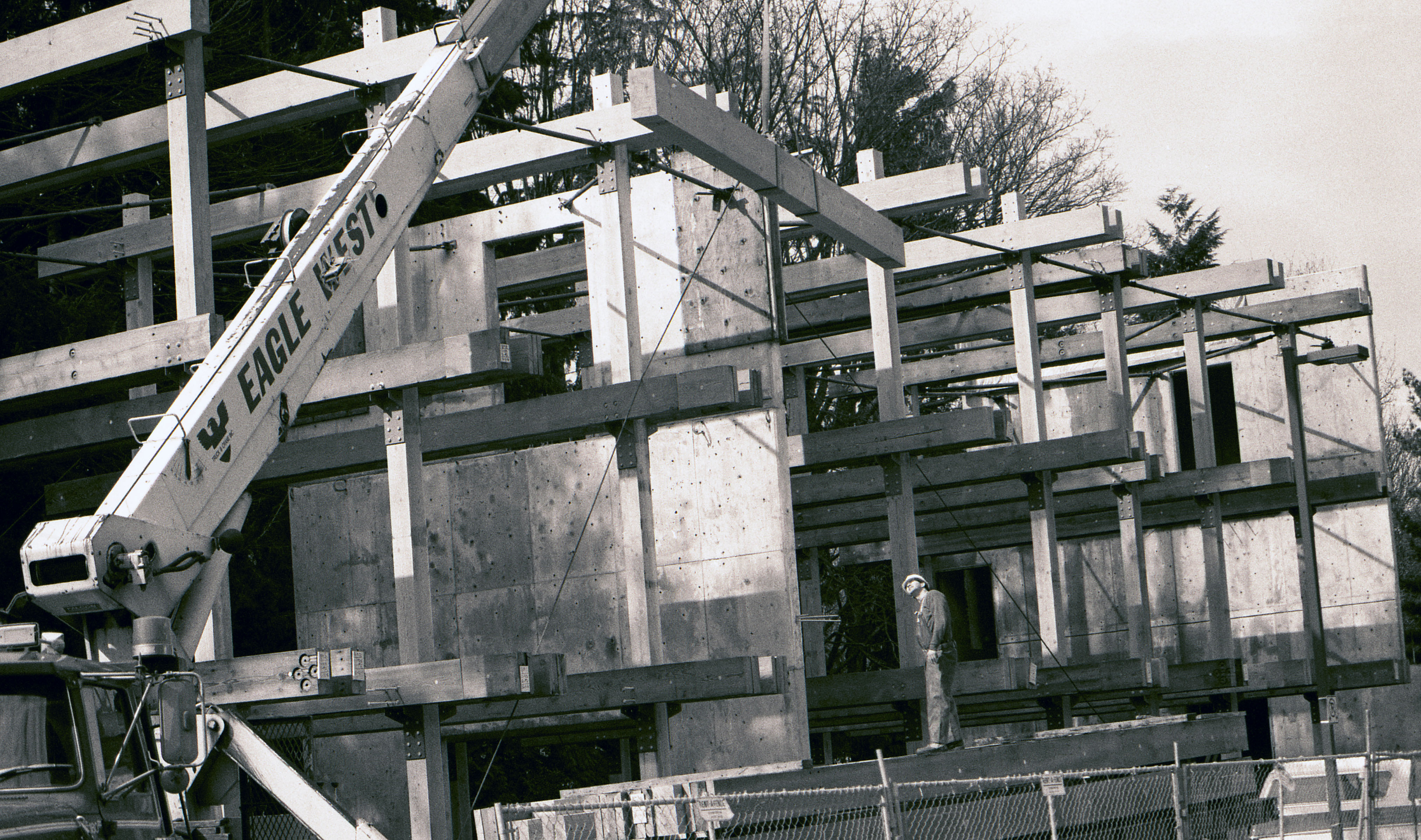

Construction of C. K. Choi building, 1995 (UBC Archives, Unknown [UBC 44.1/2823])
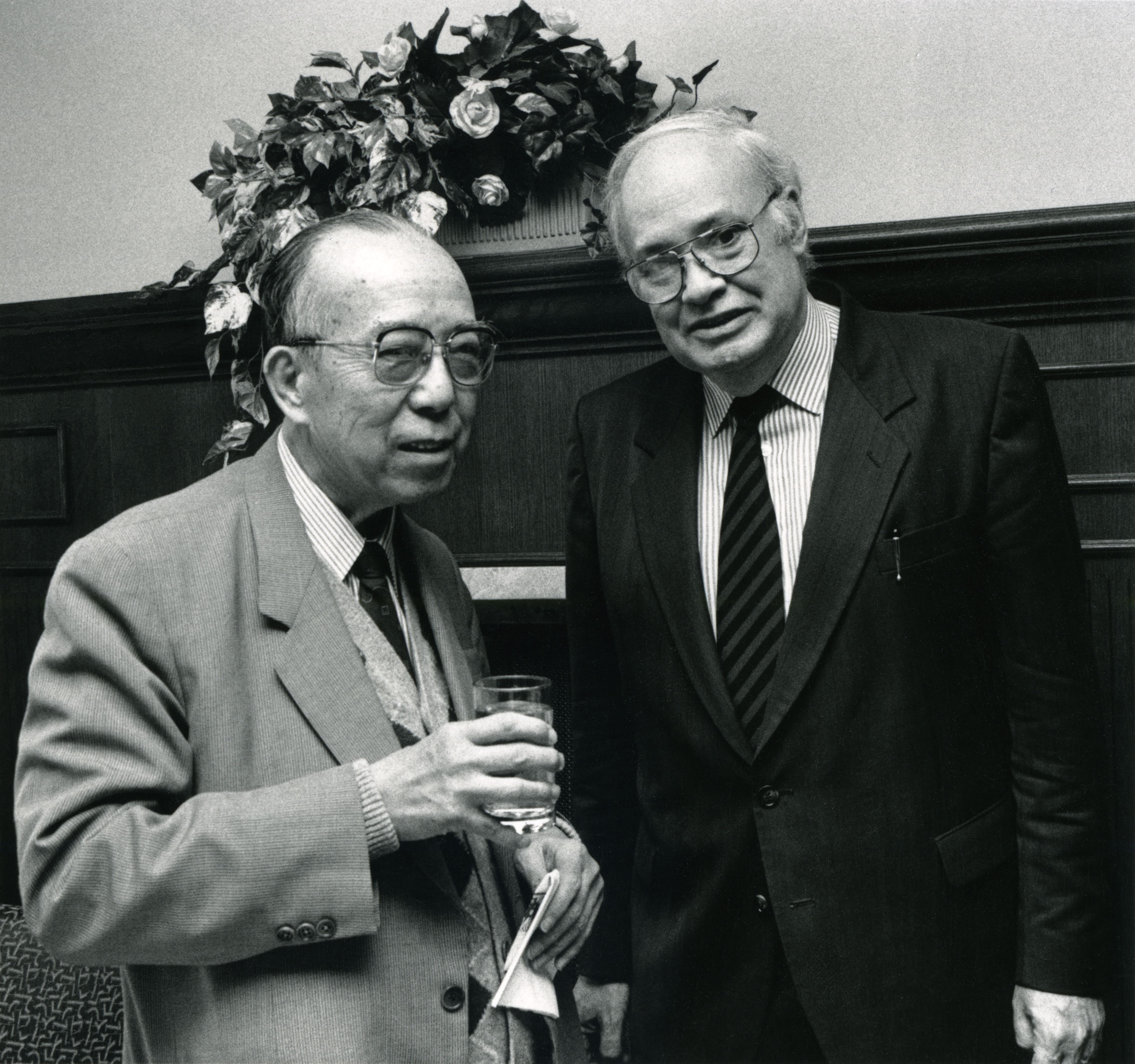

Photo of Mr. C. K. Choi (left) and David Strangway (right) in 1992. (UBC Archives, Photo by Martin Dee [UBC 44.1/3110])
